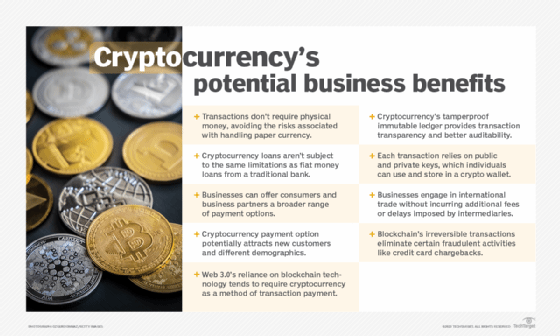How to Safely Order Cryptocurrencies: A Step-by-Step Guide for Beginners
How to Safely Order Cryptocurrencies: A Step-by-Step Guide for Beginners
Blog Article
The Future of Cryptocurrencies: Trends to Enjoy in the Upcoming Years
As we look ahead, the landscape of cryptocurrencies is going through profound modifications influenced by numerous key patterns. The development of Central Financial institution Digital Currencies (CBDCs) stands to redefine the combination of electronic possessions within typical financial systems, while increased regulative examination might form the functional landscape for cryptocurrencies. Additionally, the evolution of decentralized money (DeFi) and the expanding relevance of non-fungible tokens (NFTs) assure to change assumptions of ownership and evaluation in an electronic economy. These advancements raise critical inquiries regarding the future trajectory of cryptocurrencies and their role in our monetary ecological community.
Rise of Central Financial Institution Digital Currencies
The appearance of Reserve bank Digital Currencies (CBDCs) stands for a considerable shift in the financial landscape as governments check out digital choices to typical fiat money. These state-backed electronic money aim to enhance the effectiveness of repayment systems, promote monetary incorporation, and offer a secure option to private cryptocurrencies. Unlike decentralized digital money, CBDCs run under the auspices of central financial institutions, guaranteeing regulatory oversight and stability.
Several countries are actively piloting or researching CBDCs, with noteworthy examples including China's electronic yuan and the European Reserve bank's electronic euro effort. These initiatives highlight a growing recognition of the potential advantages of electronic money, such as faster deal rates and decreased costs connected with cross-border settlements. Moreover, CBDCs can work as a tool to combat illicit activities by supplying higher openness in deals.
As the adoption of CBDCs proceeds, they may improve customer actions and influence global economic dynamics. The transition to a digital money framework presents obstacles, consisting of technical infrastructure, cybersecurity worries, and public depend on. The surge of CBDCs indicates a turning point that can redefine the role of money in an increasingly electronic economic situation, necessitating close monitoring by market stakeholders and policymakers alike.
Boosted Governing Scrutiny

Countries around the world are taking diverse methods, from outright bans to governing sandboxes that enable advancement while making sure conformity. The European Union, for instance, is relocating towards comprehensive legislation with the marketplaces in copyright-Assets Law (MiCA), intended at developing a unified strategy across participant states. In the United States, firms like the SEC and CFTC are significantly active in issuing standards and enforcement activities.
This regulative atmosphere is likely to have substantial implications for market participants. Business running in the copyright area might encounter more stringent conformity demands, which might lead to boosted operational prices. Clear policies can additionally cultivate higher institutional investment, as firms look for to navigate an extra specified legal landscape. Eventually, the equilibrium between innovation and policy will form the future of cryptocurrencies.
Development of DeFi Platforms
Decentralized Financing (DeFi) systems have undergone considerable makeover considering that their inception, reshaping the standard economic landscape - order cryptocurrencies. At first, these platforms largely concentrated on simple functions such as borrowing and borrowing, promoted by clever agreements on blockchain networks. The advancement of DeFi has actually increased to incorporate a broad selection of financial solutions, including by-products trading, yield farming, and automated market-making.
One of one of the most noteworthy improvements is the development of Layer 2 solutions, which boost scalability and minimize deal prices, making DeFi a lot more available to a more comprehensive audience. Additionally, cross-chain interoperability more information has ended up being a critical focus, permitting individuals to transfer properties seamlessly across different blockchain networks. This evolution cultivates higher liquidity and individual involvement.
Additionally, the combination of innovative governance designs has encouraged areas to take part in decision-making processes, promoting sustainability and advancement within the community. As DeFi proceeds to develop, we can anticipate further improvements in customer experience through boosted user interfaces and safety and security actions, resolving issues that have actually formerly impeded mainstream adoption. In general, the trajectory of DeFi systems factors toward a much more inclusive and reliable financial future, using options to conventional banking systems.
Assimilation of NFTs in Financing
Amidst the rapid advancement of the financial landscape, the assimilation of Non-Fungible Tokens (NFTs) has actually emerged as a transformative pressure. Generally connected with digital art and antiques, NFTs are now discovering applications in various economic fields, introducing ingenious methods to stand for possession and worth.
One considerable area of integration is in realty, where NFTs can enhance residential property deals. By tokenizing realty assets, purchasers can enjoy fractional possession, decreasing entrance obstacles and increasing liquidity. order cryptocurrencies. Furthermore, NFTs can make sure transparent and immutable documents of possession, boosting count on in realty dealings
Worldwide of financing, NFTs are also being used for decentralized financing (DeFi) applications, enabling collateralization of properties. By utilizing NFTs as collateral, debtors can access finances while preserving ownership of their digital properties. This functionality boosts the availability of economic solutions and promotes a much more comprehensive economic ecological community.
Moreover, the integration of NFTs right into typical financing might change the method intellectual home rights are managed, supplying developers with new income streams via wise contracts. Generally, the combination of NFTs in money redirected here represents a change towards even more innovative, efficient, and clear economic remedies, paving the way for future advancements.
Innovations in Blockchain Technology

One significant fad is the development of Layer 2 solutions, designed to enhance scalability and purchase rates, thus addressing the limitations of primary blockchain networks. These remedies enable faster processing of purchases, have a peek at this site decreasing costs and raising performance, which is important for mass fostering.
In addition, interoperability in between different blockchain networks is obtaining grip. This development enables seamless data exchange and possession transfers throughout diverse systems, advertising a much more connected and reliable ecosystem. Protocols that assist in cross-chain interaction are crucial for fostering collaboration amongst decentralized applications (copyright) and enhancing individual experiences.
Furthermore, advancements in consensus devices, such as proof-of-stake and passed on proof-of-stake, are adding to more energy-efficient and secure blockchain operations. These innovations not only address environmental concerns but likewise boost network durability.
As blockchain modern technology proceeds to grow, its integration into numerous fields, including financing, supply chain, and health care, will certainly redefine conventional systems, paving the method for a decentralized future.
Conclusion
To conclude, the future of cryptocurrencies is defined by transformative patterns that will form the economic landscape. The appearance of Central Bank Digital Currencies will improve the assimilation of digital assets into traditional financial systems. Concurrently, governing frameworks will progress, advertising institutional financial investment while making sure consumer defense. In addition, the continual advancement of decentralized financing systems and blockchain innovation, alongside the integration of non-fungible symbols, will redefine possession and financial deals, promoting boosted fostering and technology within the sector.
Report this page